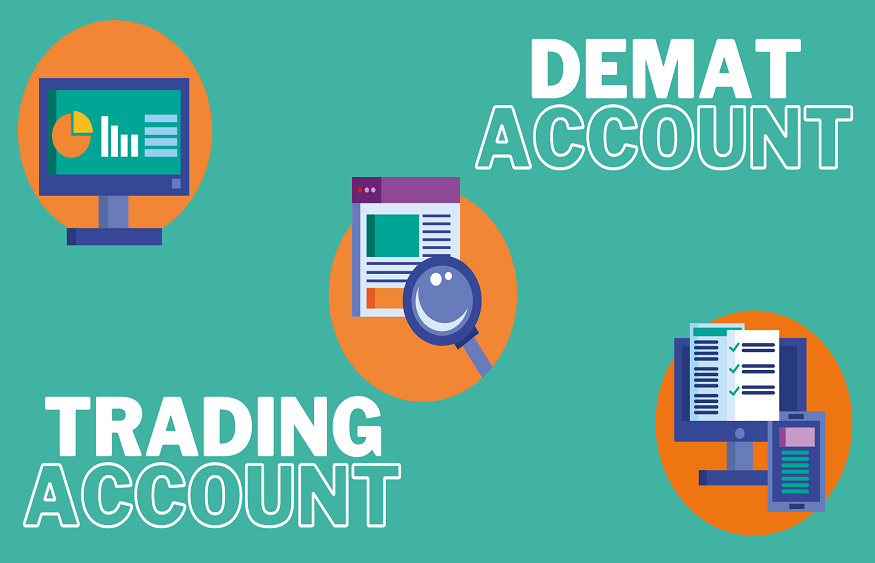The Demat account and the Trading account are two essential elements that are vital in the world of stock market investment. Anyone wishing to purchase or sell stocks and securities on the Indian stock market must meet these basic requirements. The ideas of Demat and Trading accounts, their distinctions, and the procedures and expenses associated with opening and maintaining these accounts will all be covered in this article.
What is a Demat Account?
A digital repository or online register used to hold and manage different financial securities and investments in a paperless format is called a “Demat Account,” which is short for “Dematerialized Account.” It provides a safe and practical way to store assets in electronic form, such as shares of stock, bonds, mutual funds, and exchange-traded funds (ETFs), eliminating the need for physical share certificates. A Demat Account stores your financial savings in the same way that a bank account does while also providing easy access and protection from physical loss or damage. It serves as your assets’ passive custodian.
What is a Trading Account?
On the other hand, a trading account is a flexible financial platform or interface that allows buyers and sellers of different financial instruments to transact on the stock market. It serves as a link between a person and the stock exchange. An investor uses their Trading Account to submit orders when they want to buy or sell a security. This account makes it possible for financial assets to be actually exchanged, ensuring that orders are transmitted to the stock market and carried out. A Trading Account is an active instrument for engaging in real-time trading activities, in contrast to a Demat Account, which is largely for safekeeping. This enables people to take advantage of market opportunities and make investment decisions.
Steps to open a Demat Account and Trading Account
To open Demat account and trading account, you can contact a reputable Depository Participant (DP) of your choice and follow the account opening process outlined by them.
- Depository Participant (DP) selection: The first step is to choose a DP, which is an intermediate permitted to provide Demat services by the Depository (NSDL or CDSL). In India, banks and brokerage houses are common DPs.
- Submit the opening account form: You must complete the account opening forms that your DP of choice has provided. These forms demand financial and personal data.
- Send in the necessary documents: You must send a number of documents with your completed applications, including evidence of identity, proof of address, a PAN card, passport-sized photos, and bank account information.
- Verification and In-Person Verification (IPV): The DP will verify your documents and may conduct an In-Person Verification (IPV) through video conferencing or in person.
- Receive Your Account Details: Once your application is approved, you will receive your Demat account number and Trading account login credentials.
- Start Trading: Transfer funds to your Trading account, and you are ready to start buying and selling securities in the stock market.
Differences between Demat and Trading Accounts:
| Aspect | Demat Account | Trading Account |
| Purpose | To hold and store securities. | To execute buy and sell orders. |
| Key Function | Safeguarding your investments. | Facilitating the trading of securities. |
| Essential Requirement | Required to open a Trading Account. | Not required to open a Demat Account. |
| What it Holds | Securities like stocks, bonds, etc. | Cash and securities for trading. |
| Ownership Transfer | Does not involve ownership transfer. | Involves ownership transfer of securities. |
| Frequency of Use | Infrequent; primarily for holding. | Frequent; used for trading activities. |
| Opening Cost | Charges involved in this account | Charges may apply in this account |
Charges for Opening a Trading and Demat Account:
If you’re looking to get started in the stock market and searching for an online share trading app, then you can opt for Share India, which offers a wide range of investment services. Opening and maintaining a demat and trading account comes with associated fees. These can vary depending on the DP and the type of account you choose. Here are some common charges to be aware of:
- Account Opening Fee: DPs may charge a one-time fee for opening both Demat and Trading accounts.
- Annual Maintenance Charges (AMC): DPs often levy an annual maintenance fee to keep your accounts active.
- Transaction Charges: A fee is charged for every buy or sell transaction made through the Trading account.
- Demat Charges: Charges for crediting or debiting securities to or from your Demat account.
- Brokerage Fees: Brokerage charges are levied by the broker for executing trades on your behalf.
- GST and Taxes: Goods and Services Tax (GST) and other applicable taxes may be added to various charges.
Conclusion
Understanding the differences between these accounts and the associated costs is crucial for successful stock market participation. By following the outlined steps and being aware of the fees, you can confidently embark on your journey as an investor or trader in the Indian stock market. Whether you’re a long-term investor or an active trader, these accounts serve as the foundation of your financial journey in the world of stocks and securities.






